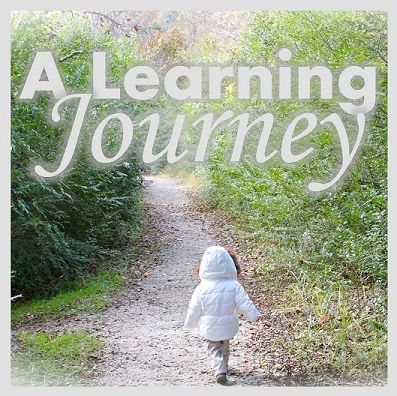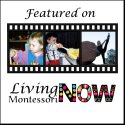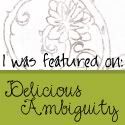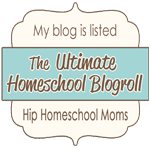PLEASE do not use the pictures or content on this blog without prior permission - the photos are my own and are copyrighted. PLEASE provide a link back to my blog if you found something useful or when referring to this content. The use of small items requires close parent or teacher supervision at ALL times. Thank you and enjoy your visit!
Alyssa's Background Information
Alyssa is 3 years and 8 months old. She is an eager learner. She is reading at a first or second grade level if not higher (not formally tested yet). She LOVES learning new languages. She is currently trying to learn Spanish and Sign Language. She enjoys reading, music, dancing, singing and drawing (really any and all art projects) just like many or most other children. Sonrisas Spanish School curriculum includes all of the mentioned items above - it just makes sense for us to review this curriculum.
Review Disclosure
This curriculum was donated to our classroom at no cost in exchange for an honest review on my blog. The review will be posted upon completion of this curriculum unless the company requests differently. The opinions expressed are my own and have not been influenced by anyone. I will be occasionally posting about our experiences with this curriculum so please check back often to hear what I have to say. Day One Sonrisas Spanish School
Curriculum Information
Curriculum Information
Our first day using Sonrisas Spanish School curriculum was a BIG hit today! Sonrisa means "smile" and Brooks and Blue Lindner have worked hard to organize a curriculum with content that will make your children or students smile. They want foreign language learning and acquisition to be fun! I know Alyssa has been smiling ... in fact as I was typing this earlier today, I heard her upstairs singing today's songs and dancing with her daddy. I have a baby monitor turned on so I can hear everything happening when I am not in the room. Sonrisas is a standards-based Spanish curricula for preschool or elementary students in pre-k through 6th grade. We are reviewing the first level which is primarily for pre-k and kindergarten. The curriculum can also be used for older students depending on their previous exposure to the language. This curriculum is meant to be repeated and used for two years. Repetition of concepts is very important in language learning as we all know. The curriculum can be used in preschools, daycares, elementary schools, as extra-curricular or after school programs, as a supplement to any program, and with homeschooling families or coops. I must also say that the organization and format of the lesson plans can be easily followed and are pleasant on the eyes. The creators of this curriculum also incorporate Gardner's theory of multiple intelligences into their lessons and activities (you can read about it in their manual or here at their blog). What more can you ask for - right?
Previous Knowledge
Alyssa still remembers Spanish vocabulary that I taught her a long time ago which has been reinforced continuously through the use of games and activities. She has already been exposed to the colors, numbers, months, and days of the week along with several other vocabulary words. Today's concepts were a review for her but she REALLY enjoyed EVERYTHING!
Scope and Sequence
Click on the link to see the Scope and Sequence with samples for Level 1. After viewing the scope and sequence, if anyone has any resources including games, activities, charts, visuals, etc. that could be used in conjunction with this curriculum please let me know. I have a membership to Education Cube Inserts and plan on using their resources for games and activities. I hope to post ideas soon! If you are also a member check back later to see how I use the inserts.Lesson One
Props Used:
1.) A Girl Puppet (for reading and games)
2.) Maracas (music activities)
3.) Sombrero (time for Spanish/other activities)
4.) Train whistle: Days of the Week Song
5.) Pointers and funny glasses for calendar chart reading
6.) Small Pocket Chart from Target with the calendar phrases:
Hoy es ...
Ayer fue ...
Manana sera
NOTES:
a.) I cannot get my computer to type Spanish accents so please ignore the spelling accent errors.
b.) This is a bit advanced for her now, but as the lessons progress I think she will catch on quickly.
c.) The Spanish charts below are posted near our school Calendar time area.
7.) Calendar Charts: Days of the Week, Months of the Year, and Colors
NOTES
a.) I actually plan on changing the days of the week chart hopefully sooner than later. I am looking for a colorful train template with the Days of the Week in Spanish (Sparkle Box has an editable train template - but I am having a hard time with the file. Twinkl also has an editable train template but I cannot get it to work either. Please help someone! If anyone can get this to work I would LOVE a copy of the files with the train carriages starting with Monday and the engine smoke having the words Los Dias de La Semana (with accent marks of course). Thank you! This would become our new Days of the Week chart or visual for Spanish class. Any other link suggestions or resources would be greatly appreciated.
Company Suggestion: You could also create colorful calendar charts and visuals to assist educator during Circle Time.
b.) I do teach Alyssa the other Spanish words for orange, pink, and brown.
c.) I wish that the Days of the Week chart seen above started with Monday instead of Sunday.
b.) I do teach Alyssa the other Spanish words for orange, pink, and brown.
c.) I wish that the Days of the Week chart seen above started with Monday instead of Sunday.
d.) I will add on a number, season, and weather chart of some sort soon (most likely from Sparkle Box Language Resources or from a Twinkl). I was recently reading Julie's blog, The Adventures of Bear. She posted a math activity using materials from the Twinkl website. After exploring their website, I found Spanish resources available too. Thank you Julie for posting this helpful resource on your blog!
Routine
We are planning on using this curriculum 2-3 times per week for 30 to 60 minutes depending on the lessons. It is important with any curriculum to develop a consistent routine and Brooks and Blue encourage you to do the same thing for your Spanish lessons. I will be working hard to provide a consistent routine for Alyssa. We actually lost track of time because we were enjoying the lesson so much. Therefore, I am not sure how long our lesson actually lasted today. I will have to pay more attention to that in the future. I plan on following the format as mentioned in the manual even if we do an extra day a week. For example, I will continue Lesson 1 on Wednesday. But, then I will start Lesson 2 on Friday and finish it on Monday. I am planning on doing Spanish on Monday, Wednesday, and Friday unless otherwise noted. Hopefully, all will go as planned. If not, I will change Spanish lessons to Tuesdays and Thursdays.
Greetings and Roll Call
I walked in the classroom wearing my sombrero yelling Hola in a very excited voice! Alyssa immediately wanted her own sombrero (this was to let her know it was time for Spanish class). I told Alyssa good afternoon in Spanish and we shook hands. We then discussed who was present (Alyssa, mommy, and the dogs) and who was not present (daddy). She ended up taking off the sombrero because it bothered her neck - I may cut off the ties or not tie it at all. I actually took mine off too after all the singing and dancing because my head was sweating. LOL! This was just an idea I read about somewhere on a Spanish teacher's blog. The sombreros were found at Hobby Lobby.
Calendar and Circle Time
At this time Alyssa is learning calendar concepts while participating in songs and playing games. Everything is done orally to improve communication and language acquisition. The curriculum encourages you to speak Spanish 90% of the time (thank goodness I have a degree in Spanish - I am not fluent ... but it does help). She LOVED dancing to the songs on the CD's and her favorite song so far is track # 6 on the Sonrisas CD. We added in the maracas and moved are hips side to side when singing "Cha, Cha, Cha." We chose several songs from both of the CD's and we used the props above to make learning more enjoyable and active. Another favorite song of hers was track #2 on the Sonrisas CD. Click on the links below to hear song samples on the CD's: Sonrisas CD or Canciones Culturales. We did the recommended game and I encouraged Alyssa to back up each time we threw the ball to each other asking the appropriate lesson question. We were practicing distance throwing and catching skills at the same time (we sat and stood up).
Thoughts and Ideas: We also brought the puppet in at this time to play the game. Another thing that you could do is lay out family photos and toss the ball on the photos. Your child can say the family member's name using different voices or intonations with the phrase Me Llamo ... (the child acts as if they are the person in the photo speaking). You could do the same thing with story character dolls or pictures (any doll for that matter).
NOTES
1.) I definitely need to spend time learning the lyrics to the songs ahead of time so that it will be easier for me to teach them to Alyssa during Circle Time.
2.) It might help if I wrote the lyrics to the songs in Spanish on pocket chart sentence strips to familiarize ourselves with the words. This will serve as a guide for us both in the beginning.
Company Suggestion: Create a big book with song lyrics as part of the curriculum price.
3.) Typing the season and weather poems for the student to see as I read aloud may also be helpful when learning this information. I will also use weather and season visuals when reciting the poems. See Sparkle Box and Twinkl resources above. I have another website with resources but have to look up the information before posting it here.
Company Suggestion: Add a FREE special linked website for curriculum users containing resources made specifically to accompany the lessons. The enlarged weather and season poems or song lyrics could be added to this section. Additionally, the calendar concept visuals could be added.
4.) I need to teach Alyssa how to blow the train whistle without covering it with her entire mouth.
5.) She uses the charts during calendar song time (with and without special pointers). She is dancing in the second picture.
Story Time
Unfortunately, I will be using the library and the interlibrary loan exchange to obtain necessary books for story time because I cannot afford the books at this time (although it would be awesome to eventually have a library of Spanish books). One of our libraries charges for this service and I was happy to find out that the library closest to us does not. This may slow down our lessons since we might have to wait for books to become available. I will use other Spanish resources or activities to fill in the wait time. I will also keep my eyes open at our Half Price Bookstore. We have already spent the bulk of our curriculum money on previous purchases. Although I do highly recommend making it easy on yourself if you can afford it by purchasing the storybook set available through the Sonrisas Spanish School website. I checked out the first two books from our local library ... then I realized that the book for lesson one was not the correct book (it was by the same author and the cover looked very similar however the title was A mi manera (My Way): A Margaret and Margarita story. I was VERY LUCKY and found the correct book at Half Price Bookstore for an extremely reasonable price. I contacted the company for a second book recommendation for lesson two since I was unable to get the book. I found the second recommendation at the library.
We snuggled up in the bean bag chair. I introduced the book for the week and we read it first for enjoyment since she seemed to be so intrigued by the book. She did repeat several of the key vocabulary words in the book. I will ask questions in Spanish during the next reading since there is only one book suggestion for this lesson. Here is a picture of Alyssa engaged in the book after story time. She was reading the English parts and apparently "the puppet" from our game activity was trying to read the Spanish parts. She did very well reading both - LOL!
NOTES
1.) I would love more than one book suggestion for the first two lessons. Most lessons have more than one book recommendation.
Art Time
Alyssa completed her self-portrait and labeled it on her own. She used the white board to learn how to label the portrait. I modeled how to draw a self-portrait on the white board and labeled my picture (I jumped the gun before I realized that was part of the next lesson). She already knows the parts of the face so as she drew her picture she was telling me the Spanish words for her facial features. Her handwriting is looking better every day. She was in a hurry to label it because daddy was on his way home and she wanted to show it to him. There are several pictures below of the self-portrait activity.
NOTES
1.) I am not sure what we will do for art on Wednesday since Alyssa completed the first and second day art activities during the first lesson. There is no other suggestions listed, but I might come up with an additional activity. We'll see!
2.) Company Suggestion: In regards to using Spanish 90% of the time it may be helpful to include Spanish vocabulary phrases or signs for art projects online as a FREE resource accessible to educators and parents.
P.S. I love that she added a heart and a belly button to her drawing. She learned how to draw people from the Handwriting Without Tears Curriculum (Mat Man Lesson). I noticed later that she was missing arms so I will ask her in Spanish if she has arms during the next lesson and we'll see if she adds them or not. She originally labeled her picture with her name in pink and then added the complete sentence after viewing my model on the board. I am not sure why she drew her hair black and brown but she told me that the pink was her pony tails. Her pony tail holders were white.
NOTES
1.) I should have given her a mirror so that she could see her reflection and draw what she sees.
Good-Bye
We had to say our good-byes in Spanish although Alyssa did not want to stop the lesson. We ended the lesson by giving each other a high five! Then, Daddy came home and it was Alyssa's turn to be the teacher!
Homeschool Connection (Home Report)
This was so much fun! Alyssa shared her work with daddy. She actually made him go through most of the lesson (including songs and calendar time). Talk about keeping him involved! I am surprised she did not have him create his own art project (although that may happen later at some point). Her daddy was so happy to see her learning Spanish and having fun while doing it. He is also thankful and appreciative for the opportunity to review this curriculum. Learning a second language is top on our list of educational goals. Jeff, my husband, also wants to learn Spanish so I think this may become a routine for us if he is not too tired after a long day's work at the fire station or at the construction site. He did have a hard time with us not using English during lessons with him, but he saw that Alyssa caught on very quickly so maybe that will encourage him to do the same. He kept asking me for translations ... I continued to speak in Spanish and began using gestures or drawings to communicate with him. I wish I actually had taken some pictures of him participating. It was so cute! Alyssa made him wear the sombrero and hold the maracas. She tried to get him up to dance but he was exhausted.
Homeschool Families
Homeschooling families can also choose to use this curriculum to teach their students or family Spanish. Click on the link above to see why. Here is the link to the FREE lesson plan for the first lesson if you would like to try it with your child. It doesn't include calendar time activities. See what you think and let me know in the comment section. I would LOVE to hear your thoughts soon!
More Information
For more information about this curriculum visit any of the links above or click on the Facts and Questions. Don't forget to sign-up for their newsletter or if you have any other questions please contact them. Let them know that you heard about their curriculum from my blog. Don't forget to check out their blog too!
Please check back later to hear more about our experiences with this curriculum. I hope to hear from you soon!
Thank you,
Tracey M.






































Tracey, this curriculum is very intriguing to me! I have been on the hunt for a fun Spanish curriculum to use with my kids. I tried another curriculum but soon stopped it b/c it started out teaching the letter sounds. I was afraid that my kids would confuse them with English letter sounds and that it would hinder their reading. (My concern was for my younger kids who were new and budding readers.)
ReplyDeleteAnyhow, I have been all over the Sonrisas website and it looks great. I was wondering if you could give me some insight into the teaching approach. Are the kids primarily taught to speak the language or are they taught to speak, read, and write it? For now, I am more interested in my kids learning to speak, understand, and dialogue in Spanish. I feel they can learn to write and read it later.
So, with that said, can you let me know the approach of Sonrisas? Thanks so much! I look forward to your response! :-)
What a thorough review. I would love to try this out and to find something similar for French!
ReplyDeleteJennifer - Sorry it has taken me so long to get back with you. I just started using this curriculum and I am by no means an expert, but I would have to say that Sonrisas Spanish Curriculum focuses on oral language and communication as the goal for Level 1. They encourage consistent use of Spanish at least 90% of the time during Spanish class. All of the songs sang, games played, and books read are in Spanish however some books are bilingual. Alyssa will often read the English after I read the Spanish ... I never discourage her because of her LOVE for reading. She will also sit with the books and explore the language on her own after a lesson (often attempting to read the Spanish text aloud). Since we have been doing Spanish class again I have already noticed her pronunciation improving and her vocabulary increasing due to exposure. She constantly sings the songs from their CD around the house. The student doesn't actually read the books unless of course you encourage them to chime in when they come to a known word or concept (which I would encourage). The alphabet and Spanish letter sounds are taught in the next level. Oral language is the focus during calendar time, circle time, story time, and art. They recommend using the curriculum for two years so that means your child will be exposed to two years of oral calendar activities before reading and writing is emphasized. Then, in Level 2 the students are exposed to a letter a day and the focus shifts to reading and writing during chalkboard activities. I often expose Alyssa to the reading and writing because of her strong interest in the language and due to her experience with these particular language concepts in the past. I posted all of the charts seen on my wall as visuals to help with calendar time since our calendar was only in English. In the teacher's manual they discuss their approach in agreement with Dr. Penfield's research on language acquisition using the "mother's method ... and Patricia Kuhl's research indicating human-to-human interaction in order to learn or acquire the language. As for the methodologies behind the curriculum, Sonrisas incorporates a combination of teaching methods including ESL, Total Physical Response, The Natural Approach, the Waldorf Foreign Language Approach, and TPRS (Teaching Proficiency Through Reading and Storytelling). They go into more depth about these influences in their manual starting on page 27. Don't forget they also target all of the multiple intelligences during the curriculum lessons. You may be able to contact them and ask for more information about their approach. Sonrisas also uses the approach of reading children's literature and engaging their imagination through the senses. Circling is used in Level 2 with the older students. The guide for creating the curriculum is based on the National Standards for Foreign Language Learning. I hope this information is helpful. You could also research the above methodologies online if you are not familiar with them but it sounds like you might be. They also use authentic assessment to see if the child meets the communication objectives for this level. I hope you stop by again and Thank you for visiting!
ReplyDeleteIf you copy and paste this URL you may find more detailed information: http://sonrisasspanishschool.com/blog/tag/foreign-language-teaching-methods/
or
you could use the search button on the Sonrisas Blog:
http://www.sonrisasspanishschool.com/blog/.
Thanks a bunch,
Tracey
Tracey, Thank you so much for your response! It was VERY helpful! Now, I am heading back over to their site to check it out some more! :-)
ReplyDeleteThank for you this review. I've been looking for a Spanish curriculum for our five year old, and a friend recently suggested Sonrisas. It's helpful to see how it works for you!
ReplyDelete